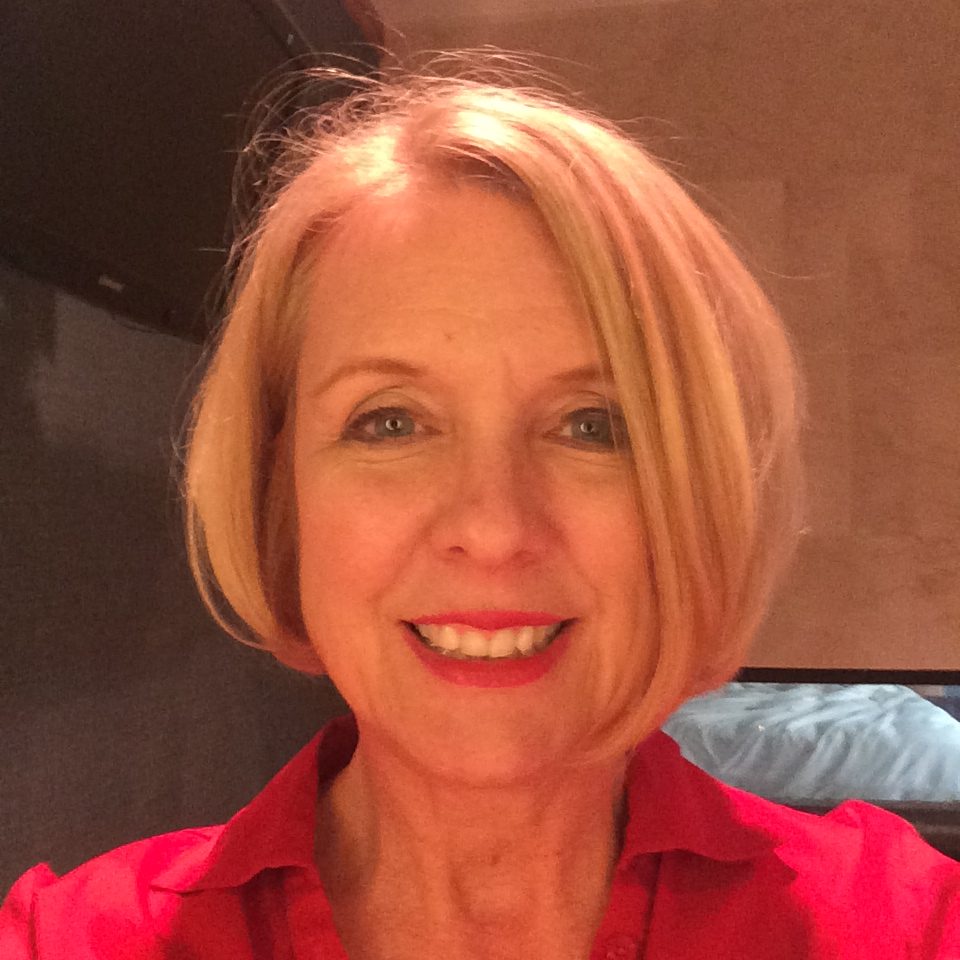When Kerri Couillard founded Babierge, she expected the business would mostly attract young families who were traveling. The Albuquerque-based fledgling company connects people who need baby gear for a few days with those who have equipment to rent.
Couillard was surprised when, instead, many of her customers were people like Yvonne Mull: a 78-year-old Santa Fe grandmother who rents baby gear for just a few days here and there when her grandson comes to visit.
“I don’t want to buy it and I don’t want to store it,” Mull said. “This works perfectly for me.”
Older customers are surprising many companies that, like Babierge, are part of the sharing economy, in which people rent out rooms, cars, boats and other assets, or buy and sell services directly from each other, all connected by way of the Internet. Also known as the gig economy or the on-demand economy, it includes businesses like the home-sharing enterprise Airbnb and the ride-hailing service Uber.
While many of these companies assumed that their customer base would be dominated by millennials, “It turns out that the baby boomer generation is a big user of the on-demand economy,” said Rowan Benecke, global technology practice chair for public relations firm Burson-Marsteller.
25 percent of Americans who are 55 or older say they’re providing services in the sharing economy.
In conjunction with the Aspen Institute and Time magazine, Burson-Marsteller developed a survey in late 2015 that revealed that 29 percent of people over age 60 have used sharing-economy services, just slightly more than the 28 percent noted in the 50-59 age group.
The fact that older adults are getting involved is good news, because the sharing economy now occupies a significant and growing position in the United States. PricewaterhouseCoopers (PwC) estimates that the sharing economy totaled $15 billion in 2014—and will grow to $335 billion by 2025.
“Companies are realizing that there’s still an untapped market among older adults, and that paying attention to this market segment is a good idea,” Benecke said. “Older adults do have a lot of purchasing power.”
Many people, like Linda and Richard Barnhart, ages 69 and 71, of Scroggins, TX, find that the sharing economy offers benefits like convenience and good prices. The Barnharts learned about Airbnb from their daughter and used the service to rent privately owned homes in San Diego and near Yosemite for recent trips with friends.
“You get much better accommodations for a lesser price,” Linda Barnhart said. “In each instance, we were able to rent an entire house, rather than just a couple of hotel rooms. It worked out great.”
More than Bargains
Some observers believe the sharing economy offers even more than bargains and convenience; they believe that services provided on demand could create a new, cost-effective avenue for older adults to stay independent longer.
“Use TaskRabbit to get help around the house, use Instacart to deliver your groceries, use Uber to drive you to your medical appointments; the list goes on,” says Glenn Carter, a blogger at the Casual Capitalist.
Having convenient access to these services, at a reasonable price, could be a game changer, allowing older adults to avoid or postpone moving into assisted living.
“When you compare the cost of a mortgage with the cost of assisted living facilities, in some cases it can make more financial sense to use those services and age in place, rather than move to a facility, depending on the level of care required, of course,” said Nela Richardson, PhD, chief economist for national real estate brokerage Redfin.
And Dr. Joseph Coughlin, director of the Massachusetts Institute of Technology AgeLab, thinks ride-sharing services could help solve the critical problem of transportation that plagues many older adults.
“Uber improves on cabs in a few critical ways—loved ones can track Uber cars’ progress, for instance—and other, smaller services go even further,” he writes in a blog post. He points to SilverRide and Lift Hero, which match older passengers with drivers who are willing and trained to provide extra service, such as assisting customers to and from their doors, or accompanying them on doctors’ visits.
Participating in the sharing economy gives older people with a way to earn extra cash—and, just as important, to stay active and engaged.
However, not everyone sees the sharing economy as a panacea.
“Seniors 75 and up are less likely to use a smartphone, and most of these services depend on that,” said Laurie Orlov, blogger for the Aging in Place Technology Watch. A 2015 Pew study found that, while nearly two-thirds of all Americans have a smartphone, only about a quarter of adults 65 and older own one. (Some 78 percent of older adults do own cell phones, but they tend to be more basic devices, the study noted.)
Already, though, some companies are finding ways to get around the smartphone gap.
GreatCall, which markets Jitterbug cell phones and medical alert products to older people, recently announced GreatCall Rides, a pilot program in five markets (California, Florida, Arizona, Dallas/Fort Worth, TX, and Chicago) with significant populations of older adults. GreatCall customers simply press 0 to call an operator on their Jitterbug phone and order a Lyft ride; GreatCall adds the cost of the ride (plus a nominal fee) to the customer’s monthly bill. No cash is involved.
“Even among those older adults who do use a smartphone, the comfort level with the technology may still be a barrier,” said Gyre Renwick, head of healthcare enterprise partnerships at Lyft. “They may not be comfortable downloading and using an app, for example. By offering another option, we took away that barrier.”
For those who do own smartphones but lack confidence using apps, Lyft has an ambassador program. Jeff Roberts, a Lyft driver in Fort Worth, TX, visits independent living communities to get the word out and to provide “tech support.” He hosts learning sessions to give hands-on guidance and pamphlets with step-by-step instructions for using the app.
Roberts saw the opportunity for serving an older customer base after watching his grandmother discover Lyft. “She no longer drives but with Lyft can get her hair done each week and run errands,” he said.
Getting in on the Game
Some companies see an even bigger business opportunity in wooing older adults to provide services as “offerors” in the sharing economy.
Uber estimates that one in four of its drivers is 50 and older. A study by Airbnb showed that hosts 60 and older represent its fastest-growing age demographic; women 60 and up earn a higher percentage of five-star reviews (top reviews) than any other age and gender combination. And DogVacay, which pairs pet sitters with pet owners, estimates that 25 percent of its sitters are 50 and older.
Many older Americans have acquired assets—such as rooms in a large home or an extra car—that end up unused after the kids have moved out or they’ve stopped commuting to work. Companies like Airbnb and RelayRides (a car-sharing service) “let seniors monetize assets that would otherwise be gathering dust,” said Coughlin of AgeLab.
Participating as offerors also provides a way to earn extra cash—and, just as important, to stay active and engaged. Research suggests that people who become isolated in their later years don’t live as long or fare as well, health-wise, as those with strong social networks.
The sharing economy has opened new connections, both human and canine, for retired handyman Jon Palmer, 60, of Plano, TX. Palmer was devastated when his own dog, a black lab named Gracie, passed away two years ago. Later, when a lost black lab wandered onto his front porch, he took it as a sign.
“I had the best time caring for my new friend while waiting for her family to pick her up,” Palmer said. “I knew then where my next path would take me.”
Sharing-economy companies, created by young visionaries, could ultimately change the lives of older adults profoundly.
Now he offers dog boarding and day care out of his home by way of DogVacay.com. His wife works during the day, so this gives him canine companionship as well as a way to bring home some cash.
In meeting new clients, “I feel as if I make new friends every week doing this,” he said. “And I’m not the type to sit and watch TV all day.” Another bonus: while sitting jobs keep him busy, they don’t require Palmer to climb on ladders or to work outdoors in hot weather, as his previous job often did.
Palmer is part of a growing trend. An April 2015 report from PwC estimated that, while 7 percent of all Americans consider themselves providers in the sharing economy, of those ages 55 and up, 25 percent do.
However, Palmer doesn’t face one of the biggest downsides of the gig economy, given that his wife still works full time. For most, the work doesn’t provide the safety net that full-time employment does. Income often fluctuates, and the work doesn’t come with health insurance or other benefits.
While it’s clear that older adults are taking on gig-economy jobs, “what’s not clear is whether they’re doing this because they’re semiretired and value freedom and flexibility, or because they’ve been downsized out of a full-time, full-benefit job and have to settle for contract work,” says Bloomberg View blogger Justin Fox.
For those who do have a safety net—Social Security for income and Medicare for health insurance—doing jobs “on demand” offers a way to stay active, earn some extra cash and keep a flexible schedule. Or put another way, adults who remain able and willing to work may be the best positioned segment to work in the on-demand economy.
Room for Growth
While many older adults do use the sharing economy, experts agree there are still untapped avenues for increased usage among older adults. The Burson-Marsteller survey revealed two factors that may keep seniors out of the sharing economy: awareness and trust.
“Only 20 percent of the people surveyed, ages 60 and up, were familiar with the term ‘sharing economy,’” Benecke said. “There’s an opportunity for these companies to raise the awareness and to educate older potential customers about the services they are providing.”
Perception is also an issue, said Michelle Barnhart, associate professor of marketing at Oregon State University, who has studied consumers age 80 and up. “There’s a perceived difference between the shared economy versus the more heavily regulated, commercialized economy that we’ve all become accustomed [to]. We tend to feel like a company that watches its employees and is bonded and licensed and insured is a safer option than a peer-to-peer exchange.”
Still, Barnhart turned her parents, Linda and Richard, on to Airbnb, and she suspects that’s how many older adults initially connect to the sharing economy—through word-of-mouth by way of children or other trusted friends and relatives.
For the older Barnharts, the smartphone piece wasn’t an issue because they both retired recently from jobs that required them to use technology. However, that could be a barrier for her peers, Linda Barnhart believes.
If businesses can help overcome these barriers to connect with older adults, they stand to profit. While sharing-economy companies were created by a younger generation of tech visionaries—with young, urban consumers in mind—they could ultimately change the lives of older adults most profoundly.
Says blogger Glenn Carter, “Where the sharing economy really stands out is its ability to keep [older adults] social and to help them live more independently.

Freelance writer Mary Jacobs lives in Plano, TX, and covers health and fitness, spirituality, and issues relating to older adults. She writes for the Dallas Morning News, the Senior Voice, Religion News Service and other publications; her work has been honored by the Religion Communicators Council, the Associated Church Press and the American Association of Orthopaedic Surgeons. Visit www.MaryJacobs.com for more.



